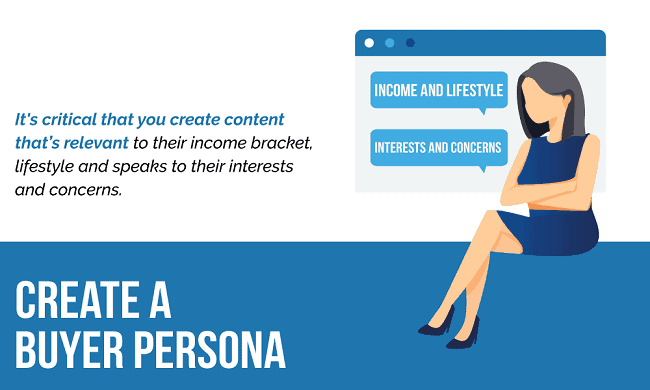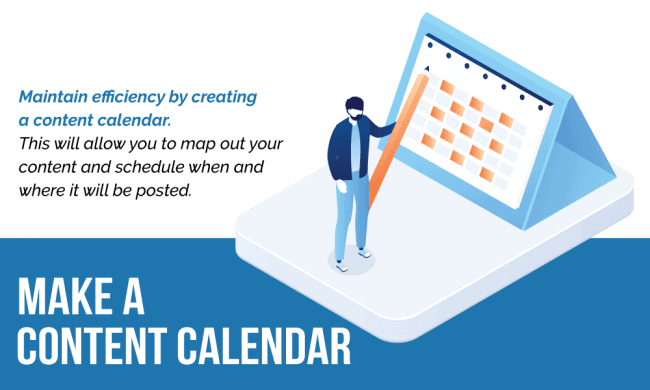According to HubSpot, “The purpose of content marketing is to create and share relevant written, downloadable, and visual media so your target audience can learn about your brand, expertise, and products or services.” In today’s online marketplace, content marketing is one of the most important factors in the effort to stand out among your competitors. Consistently generating content optimized for SEO is, of course, going to help put your business on page one of a Google search and direct traffic to your website. However, to get visitors to remain on your website long enough to become familiar with your brand, confident in your authority, and ready to respond to your call to action, you can’t just randomly create content. You need to create an effective content marketing strategy.
Whether you’re a B2B or B2C business, content marketing is essential to remain competitive and successfully grow your business. The key to a successful content marketing strategy is regularly creating high-quality content that answers the questions that your audience is asking. That content will help you build relationships, cultivate brand loyalty, generate leads, and improve conversions. To develop an effective content marketing strategy, there are a number of steps to be completed before creating a single piece of content. Otherwise, your marketing efforts will produce less than stellar results.
 Define Your Mission and Goals
Define Your Mission and Goals
You may be wondering what the difference is between these two. The mission of your company or organization is its purpose. It’s the products or services you provide. Your mission benefits your audience. Your goals are those things you want your company or organization to achieve. What do you want to accomplish through your content marketing efforts? Improved conversions and increased revenue are typically the ultimate goals for most businesses. However, there are other achievements to be made through effective content marketing that can be the stepping stones to help you reach those goals. These include increased website traffic, elevated authority, more social media engagement, and improved SEO. Once you’ve clearly defined your mission and goals, you’re ready to take the next step in building your strategy.
Establish Measurable KPIs
When setting the goals you want to achieve, it’s crucial that those goals are measurable. For example, you may want to generate more leads. Determining the number of new leads you want to generate provides you with a specific goal or key performance indicator (KPI). Maybe one of your goals is to increase your website traffic. If that’s the case, your KPI would be the specific percentage of increased traffic you want to achieve. These KPIs are not only an important part of an effective content marketing strategy but can be applied to all aspects of your marketing efforts from increasing sales and revenue to improved email and social media marketing. It’s important to keep track of how much is spent on each of your marketing campaigns and which are providing the best returns on your investment, allowing you to adjust them accordingly.
Identify Your Target Audience
This is an extremely important part of a successful content marketing strategy. No matter how much you invest in any of your marketing efforts, they will produce little results if aimed at the wrong audience. Knowing who your audience is will make it easier to create relevant content that they will find valuable.
To identify your target audience, start by compiling demographic information on your website visitors, email subscribers, and followers on social media. This information can be gathered through website, email, and social media analytics and will include information such as age, gender, education, and income. You can also use Google Analytics to get insights into your audience’s interests. Sign in to your account and click on Audience >> Interest >> Overview. Here you will be able to see the market segment your audience falls into.
Customer feedback is another source for insights into your audience. Comments and conversations on social media as well as customer reviews can help you understand the issues they are trying to resolve and what they value most.
Create a Buyer Persona
In order to create effective content, there are a few questions you need to answer. Who are my customers? What type of jobs do they have? What do they do for fun? The information gathered from analytics and customer feedback can provide answers to these questions and help you create a buyer persona. This is a profile of your ideal customer developed from your research. A detailed buyer persona is a great marketing tool that can guide you in deciding what type of content to create. It’s critical that you create content that’s relevant to their income bracket, lifestyle and speaks to their interests and concerns. With the sheer multitude of products, services and information available at their fingertips, consumers won’t waste time on a website that doesn’t deliver what they expect.
 Evaluate Current Content
Evaluate Current Content
Once you’ve created your buyer persona, it’s time to conduct a content audit. This will allow you to evaluate any existing content to determine if it is helping you achieve your goals. A content audit involves logging all of your website and blog content. This can be done using a website crawler like Screaming Frog. This will list URLs, analyze page titles and descriptions, identify duplicate pages or blog posts, and create site maps. SEMrush also has a content audit tool that can provide a thorough analysis of your content titles, descriptions, lengths, and social shares which can be exported into a spreadsheet.
When evaluating the usefulness of your existing content, there are specific metrics to be concerned with. These include inbound links to your content, the search engine ranking of the keywords for each piece of content and how often the content is shared. These metrics will show which pieces of content are performing well and which need to be improved, updated or replaced.
Evaluating your current content will also allow you to identify gaps such as keywords you should be targeting, audience questions you’re not addressing, and content that is starting to gain traction. With the right improvements, content that’s begun to rank could potentially end up in one of Google’s answer boxes. If achieved, this would have your content listed in page one not just once, but twice. Tools such as Ahrefs can be used to carry out a content gap analysis.
Determine the Best Content Channels
Once you’ve reached this point in developing your content marketing strategy, you’ve probably figured out which social media networks your audience frequents most and where you have a solid presence. Those are the networks to focus on when promoting your content. You can revisit Google Analytics to make sure your observations are correct. By clicking on Acquisition >>Social >> Overview, you’ll be able to see on which social media networks your content is being shared. Other software such as Buzzsumo can also be used. Here, you would type your domain name into their Content Analysis tool and enter. This will show you shares by network, content type, content length, and the top content for the past year.
Choose Content Categories
Now it’s time to decide which type of content is going to provide you with the best results. Blogs are typically at the core of an effective content marketing strategy. HubSpot reports that as of 2018, 55% of marketers say blog content creation is their top inbound marketing priority. Your blog post should cover a variety of topics that will appeal to your audience and provide valuable information that is both actionable and shareable. Buzzsumo can help you see which type of blogs are most popular with your audience and help you find other top performing content to use as inspiration. There are also features that can show you sharing statistics on specific topics, track backlinks, trending content, and more. Video, infographics, and lead generators such as ebooks, quizzes, checklists, and webinars are other forms of content that can also increase audience engagement.
Make a Content Calendar
One of the final steps in developing your content marketing strategy is to make a content calendar. This will allow you to map out your content and schedule when and where it will be posted. If you are dealing with a smaller volume of content, a Google calendar may be sufficient for scheduling your content. However, if you’re going to have multiple people generating a large volume of content, tools such as Asana or other scheduling software may be a more efficient option.
 Finalizing Your Content Marketing Strategy
Finalizing Your Content Marketing Strategy
Through research you’ve identified your audience, created a buyer persona, determined relevant topics, and mapped out a content calendar. You’re almost ready to start creating content. The question is how? You need to decide if you want to create your content in-house or outsource the task.
When creating a small amount of content, drawing from existing in-house resources can be a viable solution. However, if you want to generate large amounts of content that includes video, detailed infographics, podcasts and more, that may not be sufficient. The types of content involve equipment and expertise your existing staff doesn’t possess. You’ll either want to increase your in-house resources or enlist the services of a digital marketing company.
That’s where we come in. Creative Click Media has a team of content marketing professionals ready to create and implement an effective strategy for your company or organization. Contact us and we can discuss how our content marketing services can help you connect with your audience, build authority, cultivate brand loyalty,and increase conversions.


 Define Your Mission and Goals
Define Your Mission and Goals Evaluate Current Content
Evaluate Current Content Finalizing Your Content Marketing Strategy
Finalizing Your Content Marketing Strategy

